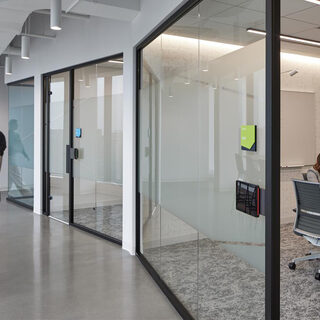Tradeline's industry reports are a must-read resource for those involved in facilities planning and management. Reports include management case studies, current and in-depth project profiles, and editorials on the latest facilities management issues.
Latest Reports
University of Tennessee’s Agriculture & Natural Resources Building (ANRB) Creates Living Research Environment
The $93 million Agriculture & Natural Resources Building (ANRB) at the University of Tennessee, Knoxville provides enhanced research, education, and collaboration with advanced technology, specialized labs, flexible classrooms, a large commons area, a 500-seat auditorium, lecture halls, seamless connections to nearby academic buildings, and a welcoming pedestrian plaza to engage the community. A biophilic design connects students, faculty, and staff with nature through the use of clerestory windows and a green roof that acts as an exterior living room with research gardens.
Amenity-Rich Environments Spark Ingenuity, Productivity, and Collaboration for Today’s Hybrid Workforce
Post-pandemic employees expect their workplaces to offer amenities similar to those they grew accustomed to while working from home: access to outdoor spaces, the opportunity to choose between working from home and in the office, areas for individual and team work, and the ability to focus on their physical, mental, and emotional wellbeing with amenities such as a gym, quiet lounges with technological support for laptops, and nearby places to socialize.
No Place Like Campus
The sudden pivot to virtual learning during the COVID pandemic has changed higher education for the foreseeable future. Interviews with more than 250 students, professors, and space planners at more than 100 campuses around the world reveal that 18- to 24-year-old students missed being on campus and are glad to be back. But they have changed; the institutions have changed; and campuses don’t quite fit anyone’s needs anymore. Learn the 10 insights from these interviews that can help shape the future of your campus design.
UConn Charts the Future of STEM with $1.5 Billion, 10-Year Initiative
The University of Connecticut has spent 10 years and $1.5 billion expanding and modernizing its science, technology, engineering, and math offerings, and increasing the number of STEM students by 4,000. The initiative, called Next Generation Connecticut (NextGenCT), included the construction of a new 198,000-sf facility and the renovation and expansion of the largest STEM building on the main campus in Storrs. The approach to both projects was to focus first on modernizing the way those subjects are taught and then on designing the space itself.
New Veterinary Diagnostic Lab Designs Improve Operations and Safety
Many Veterinary Diagnostic Laboratories face operational challenges stemming from their aging facilities, which can jeopardize the biosafety and biosecurity of their environment and hinder testing efficacy and turnaround times. Key strategies to modernizing these facilities include evaluating and improving sample receiving protocols and personnel/material circulation, as well as spatial planning and process optimization of the necropsy operation. These steps are aimed at improving the efficacy and efficiency of diagnostic services; achieving necessary biosecurity and biosafety standards; and attaining accreditation from the American Association of Veterinary Laboratory Diagnosticians and the National Animal Health Laboratory Network.





